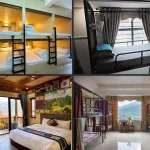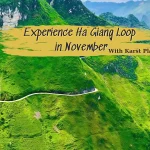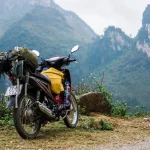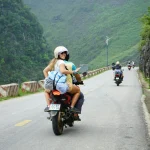The Ha Giang Loop is a must-visit destination for travelers seeking breathtaking landscapes, rich cultural experiences, and a touch of adventure. While the loop is stunning year-round, visiting Ha Giang Loop in January offers a unique charm that sets it apart from other times of the year. From misty mountains to vibrant festivals, January is the perfect time to embark on this unforgettable journey.
1. Introduction to the Ha Giang Loop Tour
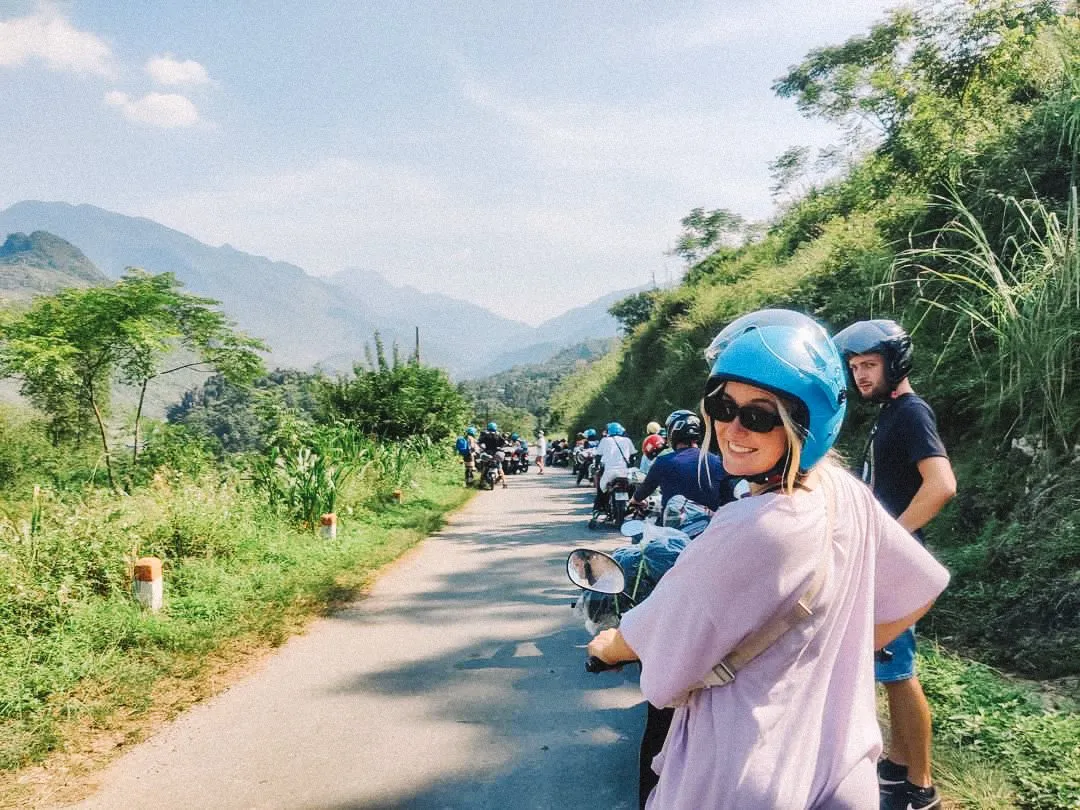
January is an ideal time to experience the Ha Giang Loop, with its cool and dry weather conditions
The Ha Giang Loop tour is a scenic route in the northernmost province of Vietnam. Spanning approximately 350 kilometers, this loop takes you through some of the most picturesque landscapes in the country. From towering limestone mountains and deep valleys to winding rivers and terraced rice fields, the natural beauty of Ha Giang is unparalleled. The region is also home to diverse ethnic minority communities, each with its own unique culture and traditions.
2. Why January is Special
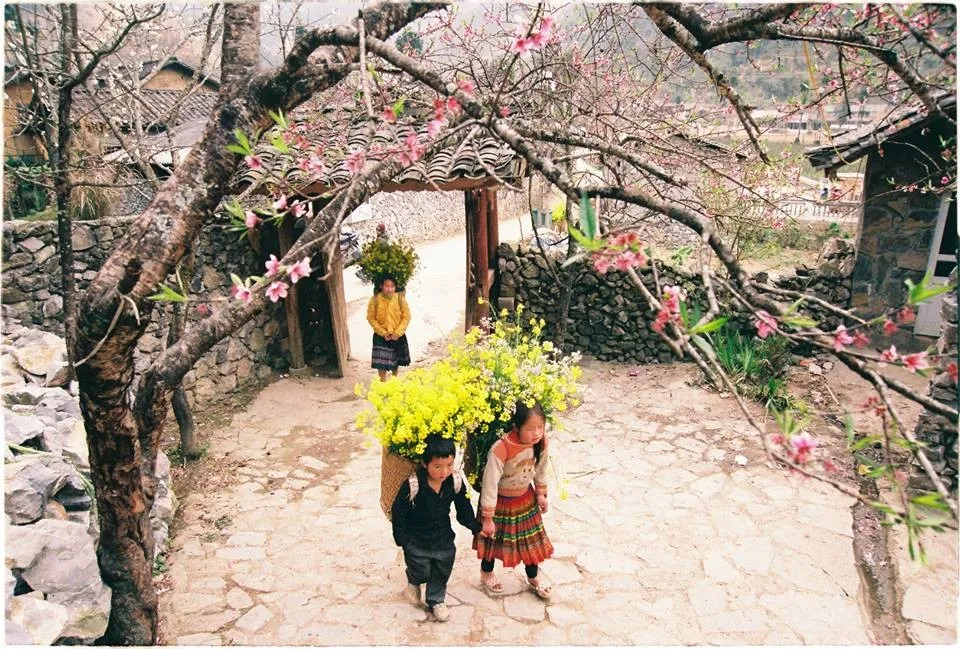
Exploring the Ha Giang Loop in January can undoubtedly be a fantastic experience
Visiting Ha Giang Loop in January has its distinct advantages. The weather is cooler and more comfortable, making it ideal for motorbiking or trekking. The landscape is often shrouded in a mystical fog, adding an ethereal quality to the scenery.
Additionally, January is a time of cultural significance in Vietnam, with various festivals and events taking place, offering travelers a chance to immerse themselves in local traditions. One of the highlights of January is the blooming of yellow mustard flowers, adding a vibrant splash of color to the already stunning scenery.
3. Weather and Climate in Ha Giang in January
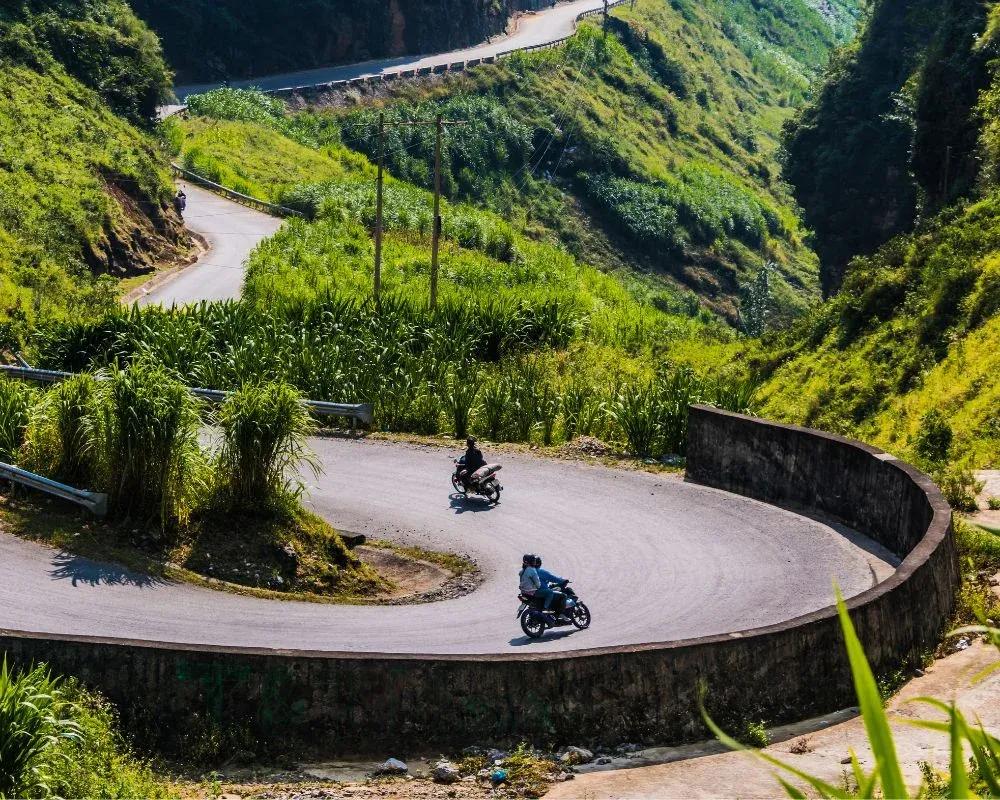
If you’re planning a trip to Ha Giang, January is the best time to embark on the exhilarating Ha Giang Loop adventure
3.1 Temperature and Conditions
January is wintertime in Ha Giang, with temperatures ranging from 8°C to 15°C (46°F to 59°F). The cool weather is a welcome respite from the heat and humidity typical of other parts of Vietnam. While the mornings and evenings can be quite chilly, the afternoons are usually mild and pleasant.
3.2 Fog and Mist
One of the most enchanting aspects of Ha Giang Loop in January is the presence of fog and mist. The mountains often appear veiled in a soft, white haze, creating a dreamlike atmosphere. This mist adds a sense of mystery and allure to the already stunning landscape, making every view even more magical.
4. Key Attractions on the Ha Giang Loop
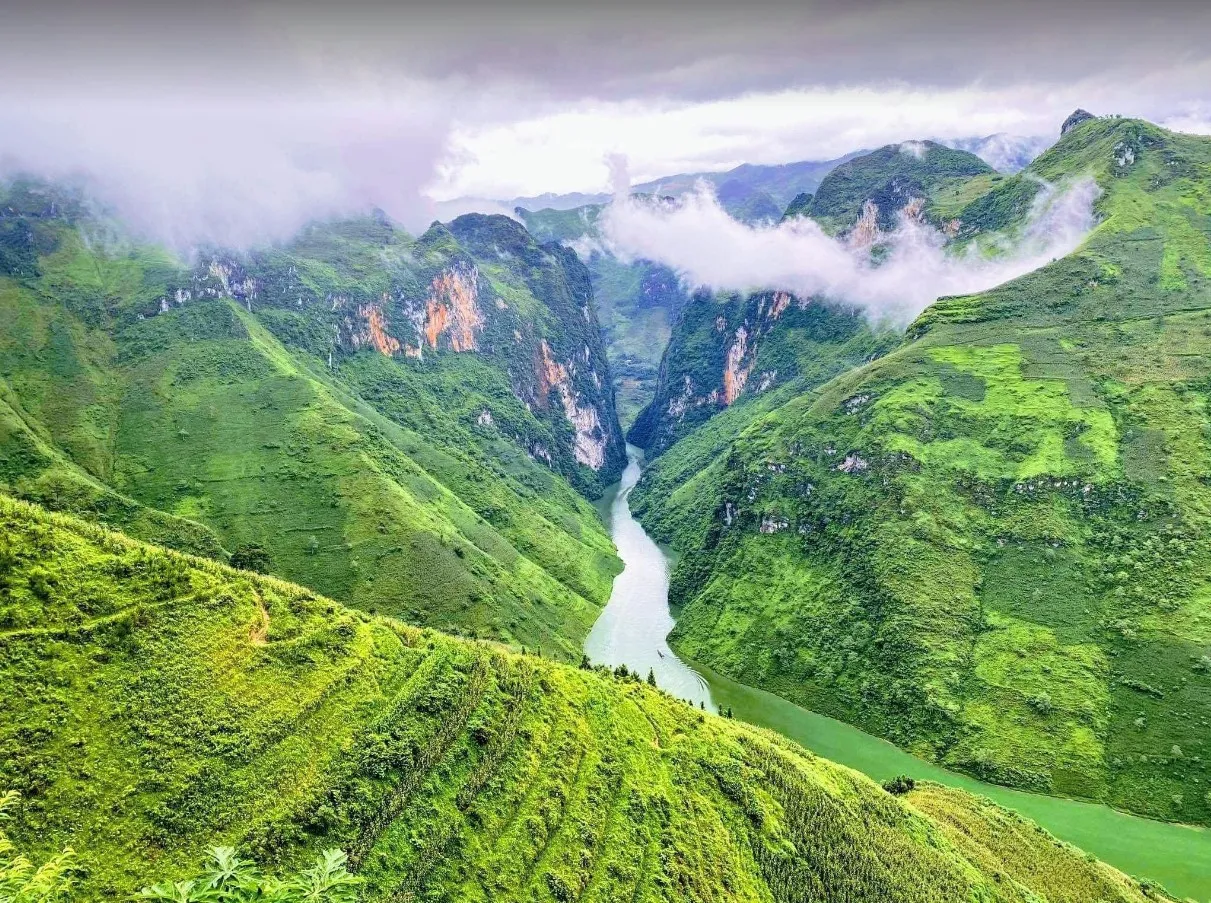
The Ha Giang Loop is renowned for its breathtaking natural beauty and rich cultural experiences
4.1 Dong Van Karst Plateau Geopark
A UNESCO Global Geopark, the Dong Van Karst Plateau is one of the highlights of the Ha Giang Loop. This area is characterized by rugged limestone peaks, deep canyons, and fascinating rock formations. January’s mist enhances the dramatic scenery, making it a photographer’s paradise.
4.2 Ma Pi Leng Pass
Known as one of the most breathtaking mountain passes in Vietnam, Ma Pi Leng Pass offers panoramic views of the Nho Que River and the surrounding valleys. The steep cliffs and winding roads are a thrilling experience for motorbike enthusiasts. In January, the pass is often cloaked in fog, adding a mystical quality to the journey.
4.3 Lung Cu Flagpole
Lung Cu Flagpole marks the northernmost point of Vietnam. Climbing to the top of the tower rewards you with sweeping views of the countryside and a sense of standing at the edge of the country. The cool January air and clear skies (on fog-free days) make the climb more enjoyable.
4.4 Meo Vac Town
Meo Vac is a charming town nestled in a valley surrounded by mountains. It serves as a convenient stopover for travelers on the Ha Giang Loop. The town comes alive with activity in January, especially during the local markets where you can witness ethnic minority groups in their traditional attire.
5. Cultural Experiences in January
5.1 Tet Nguyen Dan (Lunar New Year)
Tet Nguyen Dan, or Lunar New Year, usually falls in late January or early February. This is the most important festival in Vietnam, and Ha Giang is no exception. The entire region buzzes with excitement as families prepare for the new year. Visiting Ha Giang during this time allows you to experience traditional celebrations, including lion dances, fireworks, and special Tet foods.
5.2 Ethnic Minority Festivals
January is also a time when various ethnic minority groups in Ha Giang celebrate their own unique festivals. These events are a vibrant display of cultural heritage, featuring traditional music, dance, and costumes. Participating in these festivals provides a deeper understanding of the rich cultural tapestry of the region.
5.3 Yellow Mustard Flower Season
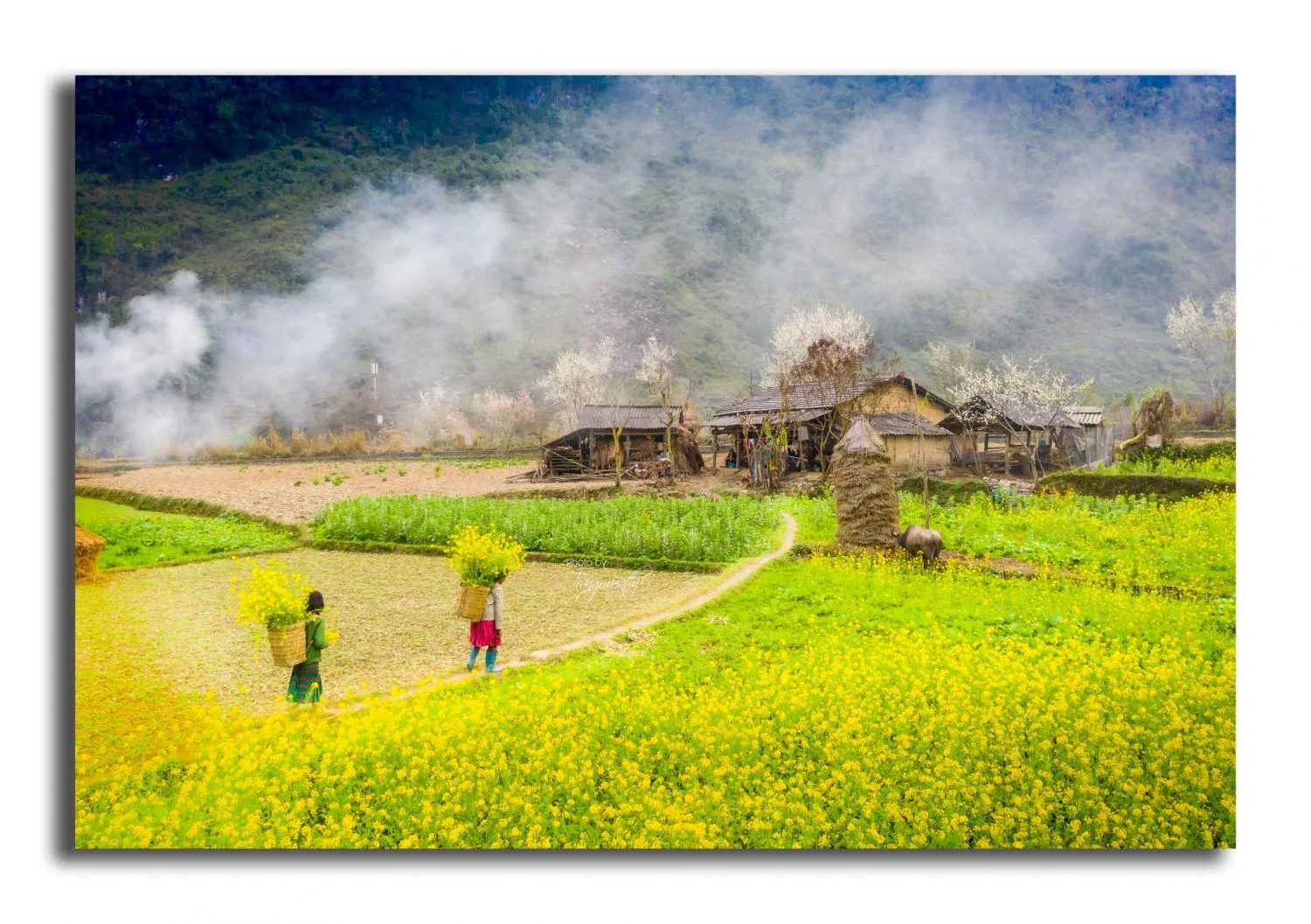
In January, the landscapes of Ha Giang are dotted with expansive fields of yellow mustard flowers
One of the most picturesque aspects of visiting Ha Giang Loop in January is the blooming of yellow mustard flowers. These vibrant yellow fields stretch across the valleys and hillsides, creating a stunning contrast against the misty mountains. The sight of these flowers in full bloom is a highlight for many travelers and adds an extra layer of beauty to the Ha Giang Loop.
6. Activities to Enjoy on the Ha Giang Loop in January
6.1 Exploring Local Markets
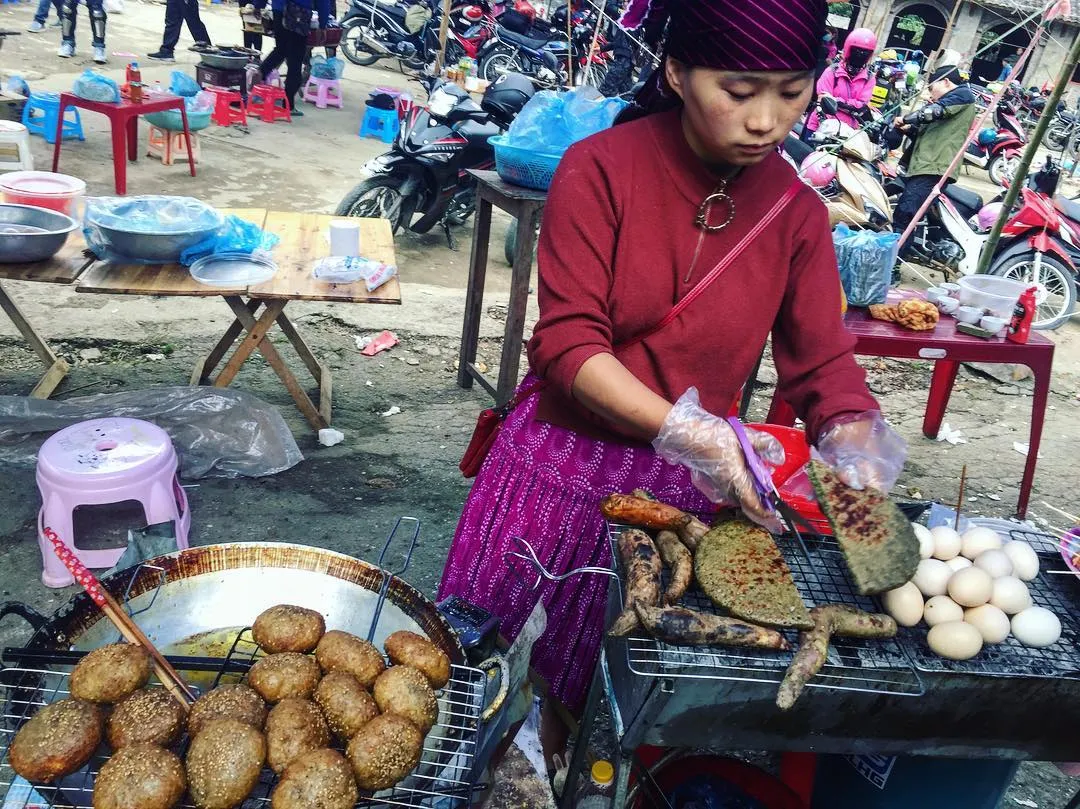
In January, the local markets in Ha Giang come alive with vibrant activity, offering a unique glimpse into the region’s rich cultural tapestry
The local markets in Ha Giang are a hub of activity and a great place to experience the daily life of the ethnic minority communities. These markets are especially lively in January, with vendors selling everything from fresh produce to handmade crafts. It’s a perfect opportunity to pick up unique souvenirs and sample local delicacies.
6.2 Motorbiking
Motorbiking is the most popular way to explore the Ha Giang Loop. The cool January weather makes for a comfortable ride, and the mist adds an element of adventure. Be sure to dress in layers to stay warm and bring rain gear in case of unexpected showers.
6.3 Photography

Ha Giang Loop in January is a photographer’s dream
With its dramatic landscapes and unique weather conditions, Ha Giang Loop in January is a photographer’s dream. The foggy mornings and clear afternoons provide a variety of lighting conditions to capture stunning shots. The blooming yellow mustard flowers offer an additional captivating subject for your photos. Don’t forget to bring extra batteries and memory cards, as you’ll likely be snapping away at every turn.
6.4 Trekking and Hiking
The Ha Giang Loop in January offers numerous opportunities for trekking and hiking. The cooler temperatures in January make these activities more enjoyable. Trails take you through terraced rice fields, lush forests, and remote villages, allowing you to experience the natural beauty and local culture up close.
7. Practical Tips for Traveling the Ha Giang Loop in January
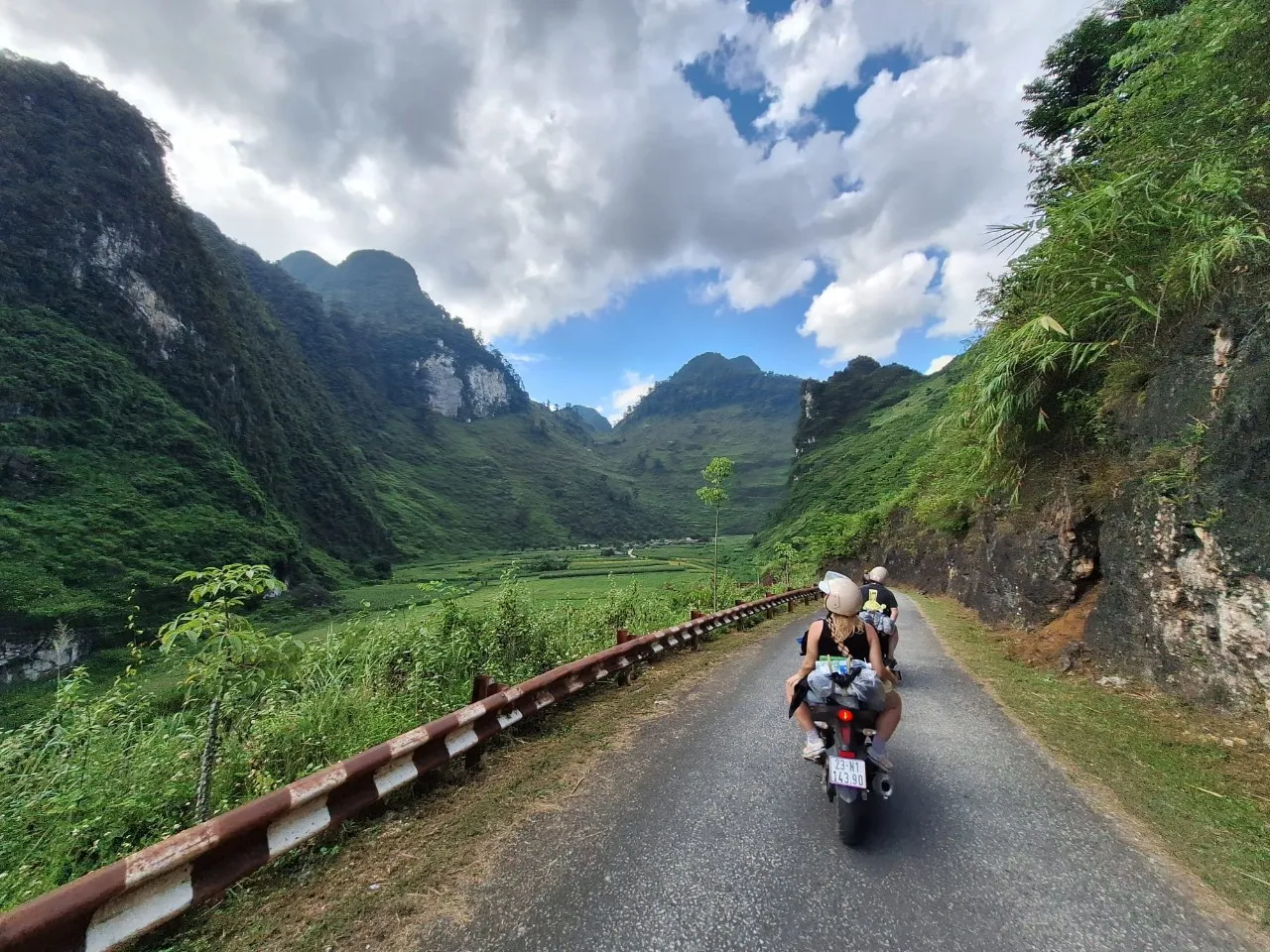
Embarking on the Ha Giang Loop adventure in January requires some careful packing to ensure your trip runs smoothly
7.1 Packing Essentials
Warm Clothing: Layering is key, as temperatures can vary throughout the day.
Rain Gear: Unexpected showers can occur, so a waterproof jacket and pants are advisable.
Sturdy Footwear: Comfortable and durable shoes are essential for trekking and motorbiking.
Camera Gear: Ensure you have enough batteries and memory cards for your photography needs.
7.2 Accommodation
While Ha Giang has a range of accommodation options, from budget hostels to more comfortable guesthouses, it’s advisable to book in advance if traveling during Tet Nguyen Dan, as places can fill up quickly. Staying in homestays with local families is a great way to experience the culture and hospitality of the region.
7.3 Safety Considerations
Road Conditions: The roads on the Ha Giang Loop can be challenging, with steep climbs and sharp bends. Take your time and ride carefully, especially in foggy conditions.
Health Precautions: Carry basic first aid supplies and any necessary medications. It’s also wise to have travel insurance that covers motorbiking.
Respect Local Customs: Be mindful of the customs and traditions of the ethnic minority communities. Always ask for permission before taking photos of people.
8. Getting to Ha Giang

There are many means of transport for you to choose from to travel to Ha Giang
If you’re planning to embark on the exhilarating Ha Giang Loop in January, you’ll need to know how to get to Ha Giang. The province is located in northern Vietnam, about 300 kilometers from Hanoi. Here are some transportation options to consider:
| Transportation | Description |
|---|---|
| Flight | The nearest airport to Ha Giang is Noi Bai International Airport in Hanoi. From there, you can take a bus, taxi, or private car to Ha Giang. |
| Bus | You can take a public bus from My Dinh bus station in Hanoi to Ha Giang city. The journey takes about 6-7 hours and costs around $10 per person. |
| Train | You can take a train from Hanoi to Lao Cai station and then take a bus or taxi to Ha Giang. The journey takes about 8-9 hours and costs around $15-20 per person. |
Keep in mind that road conditions in the mountains can be challenging, so it’s best to book a reputable transportation service or arrange for private transportation.
Visiting Ha Giang Loop in January is an experience like no other. The combination of breathtaking landscapes, rich cultural heritage, and the unique winter atmosphere makes it a perfect destination for adventurous travelers. Whether you’re motorbiking through misty mountain passes, exploring vibrant local markets, or participating in traditional festivals, the magic of Ha Giang in January will leave you with memories to last a lifetime. So, embrace the magic of Ha Giang Loop in January, and let the enchanting beauty of this region captivate your heart. For more travel tips and detailed guides, visit Karst Plateau and start planning your unforgettable adventure today!


